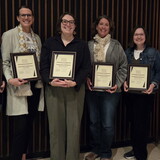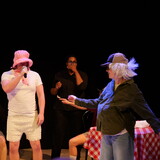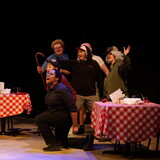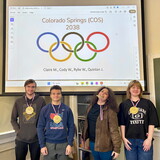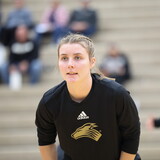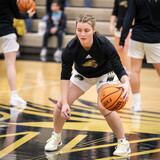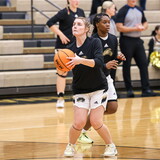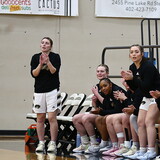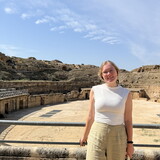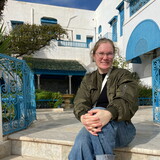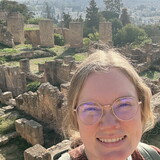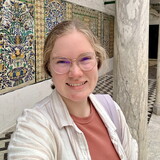Sophomore Eric Jackson admits he didn’t understand the terrorist attacks on September 11, 2001. But he was only a fourth-grader.
He does remember it being a beautiful, sunny day. He remembers where he was at in Humann Elementary School in Lincoln. And he even remembers seeing Air Force One flying over and being escorted by two fighter jets.
“I wasn’t really able to comprehend the whole situation,” said Jackson.
Ten years later, Jackson — along with other students his age — has a better understanding.
Jackson is also one of 18 students this semester enrolled in Political Science 190: Terrorism. The course — taught by retired naval captain Randy Bowdish — is a general introduction to insurgency and terrorism. Students learn about terrorist ideology, funding operations and counterterrorism.
Their assignment in honor of the 10th anniversary of the terrorist attacks was to research a victim of the attacks and give a poster presentation to the Nebraska Wesleyan University community.
“September 11th has defined this generation much like Vietnam, the Kennedy assassination and the Space Shuttle Challenger explosion did prior generations,” said Bowdish. “It’s important for students to understand the victims and their loss to society.”
Jackson selected victim Jose Orlando Calderon Olmedo.
“I feel that 9/11 is more attributed as a Caucasian attack but we must not forget the minorities affected as well,” said Jackson.
NWU sophomore Laural Wagner was also a fourth-grader at the time of the attacks. She researched and presented on Lisa Frost, a passenger on United Airlines flight 175, which crashed into the second World Trade Center tower.
“It’s a very sad thing to do,” Wagner said of her research project. “But it needs to be done to honor the victims.”
Among her findings is the heartache it caused Frost’s parents. Her parents separated, her mother suffers from depression and she nearly drowned on Mother’s Day last spring.
“They called it the ‘Mothers Day Miracle’,” said Wagner. “She was found minutes before the accident would have been fatal. I truly think it was a miracle.”
Wagner admits as a fourth-grader that she was also very confused on September 11, 2001. She thought terrorists and tourists were the same thing.
She also admits the tragedy is much more emotional for her now.
“I know so much more now,” she said. “It really impacted me with all of the anniversary programs on TV. That’s when reality really set in for me.”
One poster presentation was especially poignant for Bowdish. One of his students researched Gerald DeConto, a personal friend of Bowdish who died when the Pentagon was attacked. Bowdish — who happened to be on leave that day — had started working at the Pentagon with the Joint Chiefs of Staff on September 1, 2001.
“We were supposed to have lunch that next week,” Bowdish said of his friend.
Bowdish still carries his friend’s photo as a reminder and has since dedicated two textbook chapters on terrorism in DeConto’s honor.
Bowdish said it’s important to educate students about that terrible day.
“Targeting innocent people is a barbaric type of solution and we really need to put a cap on that and stop it the best we can,” he said. “The best way to do that is educate people.”
“These students are studying abroad more and have a greater interest in international relations,” Bowdish added. “It’s my hope that they can pass that education along to others and help put an end to terrorism.”




